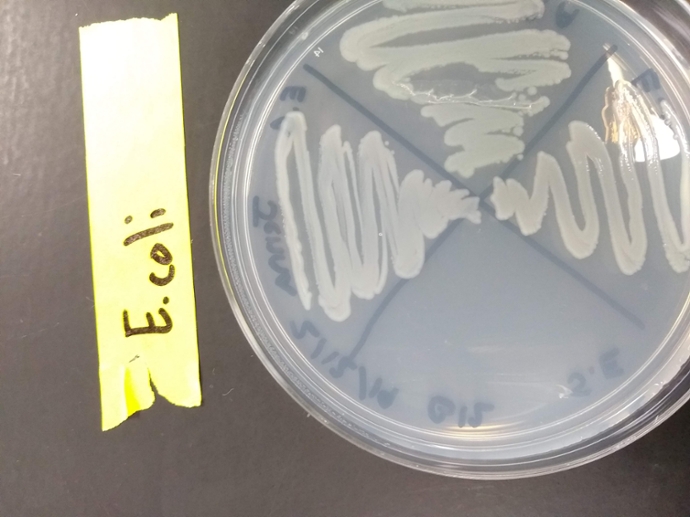Types of Media
Background
Many different types of culture media have been developed for a number of different purposes. In general, media can be divided into two categories, defined and undefined (complex) media. A Defined medium is a relatively simple medium that is made up of specific chemicals at known concentrations. An Undefined medium is composed of mixtures of yeast cell extracts or enzymatic digests of protein; the exact amount and kinds of nutrients present in the medium are not known. An Undefined medium tends to support the growth of bacteria better than a defined medium because it contains more preformed nutrients/growth factors (amino acids, nucleotides, and vitamins). Consequently, organisms do not have to expend valuable energy and materials to synthesize the "preformed" compounds supplied in the undefined medium.
Microbiologists have also developed special media that can be used to select for the growth of certain organisms or differentiate between bacterial isolates based on physiological characteristics. These media are referred to as selective or differential media. Selective media contain at least one ingredient that inhibits the growth of unwanted organisms, but permits growth of the desired bacteria. Therefore, these types of media allow for the isolation of a certain bacteria even if they constitute a small percentage of the population in a sample. Differential media are formulated to distinguish different microorganisms growing in the medium. These media usually contain a chemical that is utilized or altered by some organisms but not by others. By observing the appearance of the medium or colonies growing on differential media one can identify different organisms exhibiting different physiological traits.
Today you will inoculate three different types of media with four different bacterial species. The objective of this exercise is to illustrate the different growth characteristics of organisms on defined, undefined (rich), selective and differential media.
|
Glucose Salts Agar (GSA): is a simple, defined medium. Only organisms that can make all their cellular components from glucose and inorganic salts are able to grow on this medium.
|
Tryptic Soy Agar (TSA): is a rich, undefined medium containing products of an enzymatic digest of protein and soy product. Organisms that require vitamins or other growth factors are able to grow on TSA.
|
Eosin Methylene Blue (EMB) Agar: is a selective AND a differential medium. The selective components are the eosin and methylene blue dyes that inhibit the growth of Gram-positive bacteria and permit the growth of Gram-negative enteric rods. The differential component of the medium is lactose, which is a sugar that some organisms can ferment as an energy source. Organisms that ferment lactose produce dark purple (sometimes shiny) colonies and those that cannot, produce white or very light pink colonies. |
|
|
|
|





















